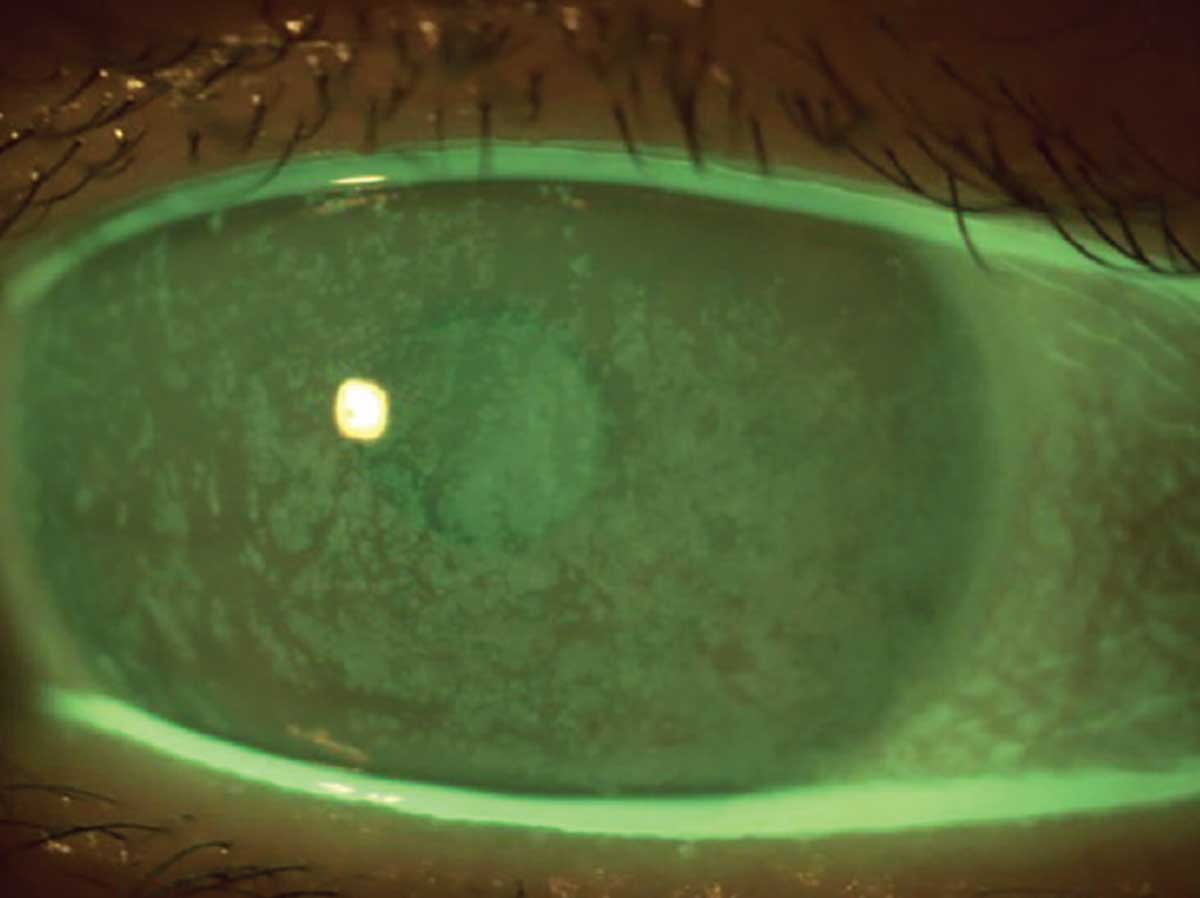 |
Q:
I have a 35-year-old female patient with recalcitrant dry eyes post-LASIK who has not responded to any traditional therapies and is now at her wit’s end. Any other options?
A:
“LASIK surgery is the most performed refractive surgical procedure worldwide,” says Mahnia Madan, OD, of Vancouver Eye Doctor, in Vancouver, BC.” Even though post-op complications are rare, approximately half of all LASIK patients experience dry eye symptoms for up to six months after surgery.”1,2
In most cases, these symptoms resolve with traditional management, which includes non-preserved lubricating eye drops, punctal plugs, oral supplementation with omega-3 essential fatty acids and/or topical anti-inflammatory agents.2,3 However, as many as 20% of these patients may develop chronic LASIK-associated dry eye not responsive to traditional therapies.1,2 The post-LASIK chronic dry eye can vary from mild pain sensation to severe and disabling chronic pain.2-4
Vicious Cycle
 |
| Patients with chronic LASIK-induced dry eye may require advanced therapies. Click image to enlarge. |
Although much is still not understood about LASIK-induced dry eye, current evidence suggests that flap creation during LASIK causes significant damage to corneal nerves and is the most likely cause of dry eye symptoms after refractive surgery.2,4 Confocal microscopy images of cornea after LASIK have shown structural changes to the corneal nerves and loss of subbasal corneal nerve plexuses.3,5 Furthermore, alteration in the concentration of neuropeptides in tears following LASIK has also been linked to dry eye disease.2
According to Dr. Madan, corneal nerves play a key role in maintaining the ocular surface homeostasis. Disruption of these corneal nerves leads to decreased corneal sensitivity, which in turn leads to disruption of corneal/lacrimal gland and corneal/blinking reflex loops.4,5 A reduced blink rate may further prevent proper meibomian gland secretion and/or excretion, perpetuating the entire dry eye cycle.4,5
Management Options
“For these patients, I recommend using platelet-rich plasma (PRP) eye drops, which are a preservative-free biological product made from the patient’s own blood,” Dr. Madan says.
Platelets are a major source of growth factors that can aid in proliferation, migration and differentiation of corneal epithelial cells, thus helping to heal the ocular surface of the post-LASIK eye.1,5 Because PRP contains a higher concentration of growth factors and other platelet-derived factors, many consider it superior to autologous serum for healing. Studies have also reported an increase in corneal subbasal nerve plexus density due to the action of nerve growth factor (NGF) present in PRP, a possible pathway to managing patients with corneal nerve injury.5,6
Although PRP is widely used in medicine and dentistry, its availability in eye care is still limited. Optometrists looking to implement a PRP system in their own practice may find some commercially available companies that provide this (depending on their state’s laws) or work with their local compounding pharmacies and labs to make their own drops. Patients can expect to spend $400 to $600 for a three-month supply of PRP eye drops.
This patient used PRP eye drops four times a day for three months, and the keratitis improved significantly. Along with using them, Dr. Madan also recommends treating coexisting lid disease aggressively in these patients. Disruption of the corneal-blink reflex loop due to damage to corneal nerves can lead to meibomian gland dysfunction in post-LASIK patients.6,7 “I also treat these patients with intense pulse light therapy followed by maintenance at-home with lid hygiene,” she says.
Dr. Ajamian is the center director of Omni Eye Services of Atlanta. He currently serves as general chairman of the education committee for SECO International. He has no financial interests to disclose.
1. Alio JL, Rodriguez AE, Abdelghany AA, Oliveira RF. Autologous platelet-rich plasma eye drops for the treatment of post-LASIK chronic ocular surface syndrome. J Ophthalmol. 2017;2017:2457620. 2. Chao C, Golebiowski B, Stapleton F. The role of corneal innervation in LASIK-induced neuropathic dry eye. Ocul Surf. 2014;12(1):32-45. 3. Labetoulle M, Baudouin C, Calonge M, et al. Role of corneal nerves in ocular surface homeostasis and disease. Acta Ophthalmol. 2019;97(2):137-45. 4. Yang AY, Chow J, Liu J. Corneal innervation and sensation: the eye and beyond. Yale J Biol Med. 2018;91(1):13-21. 5. Toda I. Dry eye after LASIK. Invest Ophthalmol Vis Sci. 2018;59(14):DES109-15. 6. Fea AM, Aragno V, Testa V, et al. The effect of autologous platelet lysate eye drops: an in vivo confocal microscopy study. Biomed Res Int. 2016;2016;8406832. 7. Wu Y, Xu L, Song Y, et al. Management of post-LASIK dry eye with intense pulsed light in combination with 0.1% sodium hyaluronate and heated eye mask. Ophthalmol Ther. November 6, 2021. [Epub ahead of print]. |

